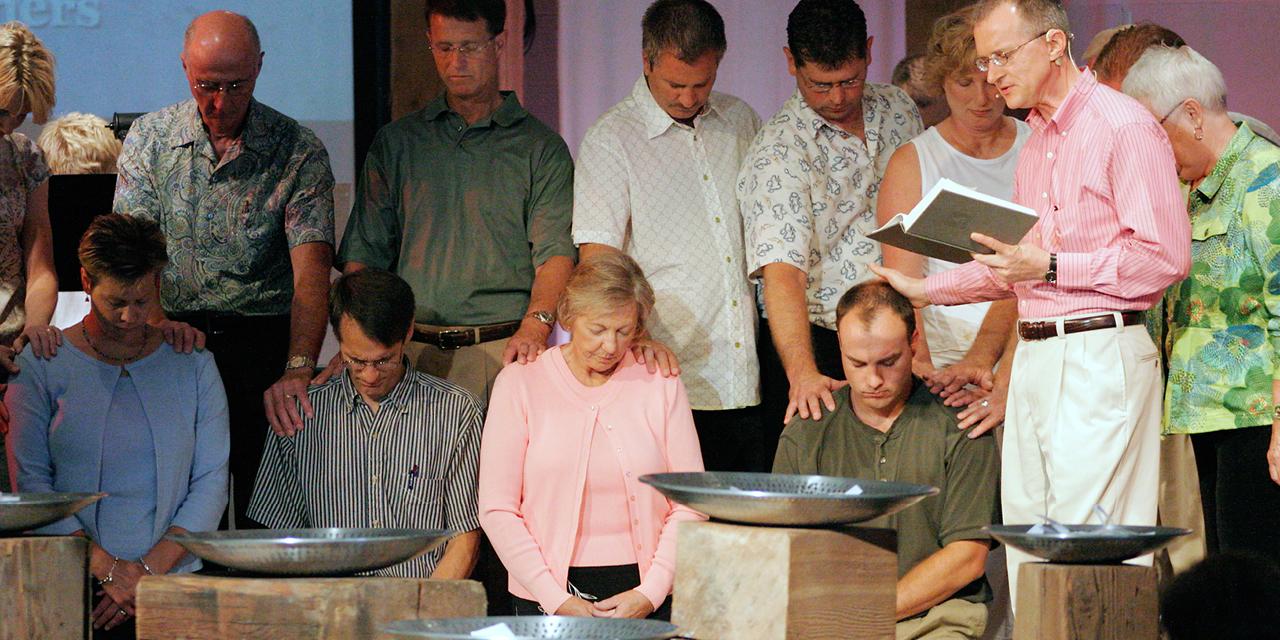What you assume about ministers, elders, and deacons depends on your particular tradition. But anyone who looks into Protestant ordination practices will learn that being ordained as a Christian Reformed elder is very different from being ordained as a Nazarene elder.
The following entries are edited from experts’ written or spoken responses to questions about ordination theology, polity, history, venues, key elements, and creative options. You’ll also find links to sample ordination and installation services.
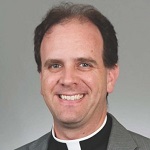 | 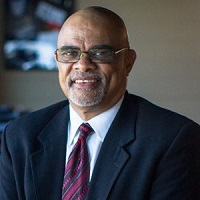 |  |
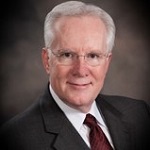 | 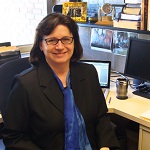 |

Kent Burreson: Associate professor of systematic theology and dean of chapel at Concordia Seminary St. Louis in St. Louis, Missouri. Ordained minister in the Lutheran Church Missouri Synod.
Theology/Polity: The Lutheran Church Missouri Synod (LCMS) is organized as congregations within district conventions. It only ordains men as ministers of the proclaimed and sacramental Word.
Kent Burreson explains, “Within Lutheran tradition, as reflected in the LCMS, ordinations and installations emphasize God’s filling of offices in the church for the benefit of the church’s life. Lutherans traditionally distinguish between one divinely established and other humanly established offices. Jesus instituted the holy and public ministry of the proclaimed and sacramental Word. Men are placed into public ministry of the church catholic in the divinely established office through ordination. This places them into the church’s global ministry. Installation then places them within a particular congregation and the responsibilities attaching to that congregation. On the basis of God’s Word, the church specifically invokes the Holy Spirit to empower, fill, and bring to completion the ordinand’s ministry of Word and sacraments.
“The church also established offices to help it live faithfully its Christocentric identity. It formally trains, calls, and commissions people for other types of ministry, including teachers; deaconesses; congregational directors of education, outreach, family life, or parish ministry; parish nurses; and chaplains. Those filling humanly derived offices are placed through commissioning and then are installed into their particular area of service.
“Ordinations, installations, and commissions should all emphasize that these people are not hired but divinely called by God through the church. God calls the person to their office and particular responsibility through the church’s activity of calling a particular person to this responsibility. Their ministry and service should be shaped by the servanthood of Christ.”
Becoming an ordained minister is usually a years-long sequence that includes discernment by the candidate and church on preparation for ministry, formation/education, examination and certification for fitness to receive a call, the call of the church, and ordination and installation. When MDiv (and deaconess) students graduate, the Synod determines their first call to ministry. After that, individual congregations call pastors and deaconesses.
History: “Ordination rites are designed to be faithful to Christ’s servanthood,” Burreson says. “My favorite Reformation Lutheran practice comes from Martin Luther. He changed the ordination rite by substituting the Lord’s Prayer for the traditional consecration prayer. Although the Lord’s Prayer now follows the actual moment of ordination, it seems profoundly fitting to call on God—with words Jesus gave us—to intercede for the church, ministers, and ministries.
“My favorite recent practice within our tradition is when Lutheran clergy are invited to lay hands upon the ordinand, both corporately at the moment of ordination and individually following that moment with a word of blessing, usually from the Word of God. It reflects the unity of the church’s ministry and the common foundation in Jesus’s establishment of and call through the Holy Spirit to the office.”
Who, How, Where: “In our tradition,” Burreson explains, “the primary participants are usually the district president/bishop, the preacher (an ordained clergyman, usually the ordinand’s selection), other pastors at the calling church (if a team ministry), and other formative pastors (an influential pastor at a congregation where the ordinand was a member, or a seminary or college professor). Sometimes seminary classmates and area pastors play a role. Others—perhaps lay members of the calling congregation and the ordinand’s parents and/or baptismal sponsors—either take part in or are recognized during the ordination service.
“I was ordained by the senior pastor with whom I was called to serve. The preacher was an ordained seminary classmate, one reader was the pastor of the congregation in which I was baptized and confirmed, and the other was an LCMS pastor who was my classmate in a doctoral degree program. My sponsors spoke a word of blessing at the beginning of the service. I wish I had had lay representatives of the congregation play a more prominent role.
“Most often ordinations are conducted by the district president/bishop or his representative. They are often included in a larger service of the Word and the Lord’s Supper. Sometimes they are included in a service of the Word or an office such as Matins/Morning Prayer. Usually the ordination/installation follows the sermon and creed and precedes the prayer of the church. The newly ordained then finishes the service with the prayers and blessing, and he leads the Lord’s Supper if it is celebrated.
“The ordination rite consists of the announcement of the ordinand and call, prayer, the description of the office through readings from the Word of God, the vows of the ordinand, the laying on of hands and the moment of ordination including Jesus’s words in John 20, prayer for the Spirit, the laying on of hands and blessing by other clergy, the corporate laying on of hands and the Lord’s Prayer, reception of the ministry of the ordinand by the church, and the final prayer and blessing. The most memorable and spiritually significant parts of my ordination were the laying on of hands and words of blessing from other clergy.
“Ordinations take place either in a congregation of significant formative influence (the so-called ‘home’ congregation) or in the calling congregation where the ordinand will serve. The former option needs to be approved by the district president/bishop and happens much more frequently than it did thirty years ago. Installations always occur in the place of one’s service. The German Lutheran Reformation also considered another option: ordinations in a central location such as a seminary or city church. But that pattern never caught on in American Lutheranism.”
Key Elements: “The laying on of hands is a key ritual and visual element. It visually highlights ministry and church unity when clergy, one by one, lay on hands. We could, however, do a better job of ritually highlighting the prayer to the triune God for the Holy Spirit’s gift and blessing. Since Lutherans believe that calls come from God through the congregation or other calling church entity, the laity should play a more central visual role than they currently do in Lutheran ordinations/installations. In some Christian traditions, the assembly extends its hands over the ordinand/installee. In others, lay people deliver instruments of vocation after the moment of ordination or installation. These might be a stole, paten and chalice, Bible or lectionary, or baptismal shell. At a recent ordination/installation, congregational representatives also handed the ordinand a church directory, candle, church policy manual, keys to the church, and a church council binder. All signaled the concrete nature of the pastor’s ministry among and with these people of God in this particular place. The ministry needs to be contextualized and incarnated.”
Learn More: Adapt a sample ordination service. Consult Lutheran Service Book Agenda for the LCMS ordination and installation rites and planning resources. Find similar resources in the Evangelical Lutheran Worship hymnal and the Wisconsin Evangelical Lutheran Synod hymnal, Christian Worship. Ask Kent Burreson about the ordination planning workshop he offers for seminarians who have received calls.
 Royce Evans: Assistant professor of pastoral ministries and executive director of ministry residency and the Urban Cohort Program at Grand Rapids Theological Seminary in Grand Rapids, Michigan. Associate pastor at Messiah Missionary Baptist Church. Ordained minister in National Baptist Convention USA.
Royce Evans: Assistant professor of pastoral ministries and executive director of ministry residency and the Urban Cohort Program at Grand Rapids Theological Seminary in Grand Rapids, Michigan. Associate pastor at Messiah Missionary Baptist Church. Ordained minister in National Baptist Convention USA.
Theology/Polity: The National Baptist Convention USA (NBC, USA) is a historically black church. It describes itself as “a voluntary global fellowship of churches, district associations, and state conventions operating as a religious corporation.” Each congregation decides which district they want to belong to.
The NBC, USA ordains people for the offices of pastor and deacon as defined in the epistles to Timothy and Titus. It ordains ministers called to serve in a senior pastor or interim pastor role. Ordination is not required for licensed ministers who serve as associate pastors. Although women have been ordained as NBC, USA clergy or deacons, it’s not common.
Royce Evans says, “We are a traditional Baptist denomination, but Calvinist in our origin. Given the value placed on autonomy, there is plenty of room for local church expression. Our denominational identity is strongly encouraged but not mandated. A Pentecostal denomination would have a bishop, whose word is final. In an African Methodist Episcopal denomination, a bishop would assign senior pastors to different churches. In Baptist conventions, we have a moderator who can speak with the authority of a seasoned pastor, but the final decision is up to autonomous leaders. Baptists typically put together a search committee, and the congregation votes on their next pastor. Any time structure pushes up against the autonomy of the local church body, we back away.”
The route to Baptist ministry starts with a layperson’s call. He or she does a trial sermon, after which the congregation may grant a license to preach in that congregation under supervision of the senior pastor. The congregation may also revoke the license. In Messiah Missionary Baptist Church, Evans says, most women identified as called to preach would be trained and developed as evangelists, not licensed as ministers. This practice, however, is not universal to the convention.
Deacons are trained and then ordained. A deacon’s training is normally overseen by the senior pastor or by an associate pastor whom he appoints. Deacons-in-training are identified so the congregation “can speak into their readiness.” Ordained deacons and licensed ministers may—under the senior pastor’s supervision—preach, serve communion, do baptisms or baby dedications, and perform funerals. Associate pastors may perform weddings with a senior pastor’s permission.
“At Messiah,” Evans says, “all our deacons are identified as ordained for life—except for malfeasance, moral failure, or expressing a desire to be released. All our deacons are active at the same time. They don’t cycle on and off the deacon board. However, when a new senior pastor comes in, any deacon who doesn’t buy into his vision may be suggested to take an inactive role.”
The NBC, USA does not require a seminary degree for ordination, though it is strongly encouraged. Whether through service, experience, or seminary education, some licensed ministers are called or assigned to a role that requires ordination. The convention website states that ordination belongs to the minister and adds: “Because there is no administrative body which can de-frock an ordained Baptist preacher, Baptist churches are encouraged to be deliberate and cautious in the ordination process.”
Evans explains, “The office of minister was established by Jesus Christ. In ordination, I affirm that I’m willing to join him in ministry and so empty myself of any carnal baggage that would interfere. Ordination is vital to the life of the church. It’s non-negotiable to have an exam for clergy ordination, because too quickly autonomy becomes ‘whosoever will.’ We need to vet personalities before we allow them to function in the role of senior pastor. As 1 Timothy 5:22 says, ‘Lay hands suddenly on no man.’”
History: “My favorite historical practice related to ordination of clergy is the examination,” Evans says. “You may be called to preach, but you also need to submit to some homiletical education. A call is not a charismatic event only. You have to know the Word of God, know doctrines, and know how to help people. That’s why we assemble to examine candidates for ordination.
“A candidate’s senior pastor or district moderator asks other senior pastors to serve on the ordination council. Candidates may choose a public or private examination, but are encouraged to do it in public. Generally members from the candidate’s church and the calling church are invited to attend the examination. Historically, the NBC, USA recommends questions, although the ordination council members can ask other questions. These personalities have read your philosophy of ministry, and you’re allowed to bring your scripted answers to questions about prayer, the Bible, inerrancy of Scripture, who casts vision for a church, and so on. The council recesses to make a private decision. They come back with one of three options: affirmation right now in this place without reservation; close, but the candidate needs more study and seasoning; or not ready now or in the timeline required to accept a call. Those who aren’t affirmed may reapply later.
“Usually the ordination council isn’t convened unless leaders already know that you’ve got what it takes. My ordination exam was four hours long, with some breaks. When the council affirms a candidate for ordination, then they move immediately to ordain and celebrate. One of the council members has already prepared to bring the charge, which is effectively a sermon about the pastor’s role. The service would already have been orchestrated by the convening pastors.
“The process is very important, because it affirms a person’s readiness. In a highly pneumatological environment, it’s the charism of the Holy Spirit upon me. The candidate also has to have the character to be ordained. The Bible says this includes being competent, being the husband of one wife, and handling the household well.”
Who, How, Where: Evans was ordained when he was called to serve as an interim pastor. Any of the ordination council participants may suggest their church as a venue. Sometimes ordinations take place at seminaries. The ordination service includes a laying on of hands by everyone on the ordination council. “This symbolizes that the public affirms that they endorse your ordination and share in the responsibility of calling you to serve in a new capacity going forward,” Evans says.
“In one of my minister’s manuals, I have my ordination date; ordination service worship songs, of which ‘I Surrender All’ was most meaningful for me; and the list of people who examined me. The minister’s manual is our recommended template for everything from baby dedications to weddings and funerals. At my ordination, they gave me a Bible and an ordination certificate signed by my senior pastor, Dr. Clifton Rhodes. It’s on the wall in my office with all my degrees, the first thing to be valued above all else.
“In our congregation, the senior pastor decides when deacons-in-training are ready and presents them to a vote during a worship service. It’s a lot easier to get done in worship, because people don’t want to disagree in that setting. At least in my congregation, the congregation normally agrees with the senior pastor. The senior pastor, the chairman of the deacon board, and maybe some others lay on hands. Deacons don’t get a certificate but may receive their training materials and notebooks as a gift. Deacons meet monthly and usually elect their chair. The senior pastor or a designated associate pastor usually meets with the deacons.”
Learn More: Consult the NBC, USA website for FAQs on ordaining clergy and deacons.
 Todd E. Johnson: Associate professor of worship, theology, and the arts at Fuller Theological Seminary in Pasadena, California. Ordained minister of Word and sacrament in the Evangelical Covenant Church.
Todd E. Johnson: Associate professor of worship, theology, and the arts at Fuller Theological Seminary in Pasadena, California. Ordained minister of Word and sacrament in the Evangelical Covenant Church.
Theology/Polity: The Evangelical Covenant Church (ECC) was founded in 1885 by Swedish immigrants to the United States, but it is increasingly multiethnic. Its congregations belong to regional conferences. The ECC usually requires master’s-level theological training before ordaining men and women as ministers of Word and service (staff pastors who are not lead pastors) or ministers of Word and sacrament (lead or solo pastors).
Todd Johnson explains that the ECC was formed by negotiating three distinct themes: “very-high-church Lutheran heritage;” pietism that “sought to renew the church and bring life to its traditions, not replace them,” and the North American revival movement, which “placed less value on continuity and tradition.”
“We are a non-creedal church, meaning we have agreed to disagree on many issues,” Johnson says. “Instead of official doctrines, we have ‘affirmations.’ These general statements offer latitude within defined boundaries. Being ordained into this type of church requires committing to defend freedom with limits. As a denomination derived from the Lutheran Church, we have always had infant baptism and confirmation. However, we acknowledge legitimate challenges to this position, so we offer the option of either infant dedication or infant baptism. A local church may choose not to baptize infants, but a Covenant pastor may not refuse to, regardless of his or her personal position. Pastors are responsible to defend the minority opinion within a congregation, even if they don’t share it. The ‘Covenant’ in our name is our covenant with one another in Christ through the Spirit.
“We have layers of tradition, yet our theology and practice of ordered ministry—as expressed in our services of commissioning, ordination, and installation—hold together our unique expression of Christ’s church.
“Ordination is not a significant decision on behalf of an individual alone. It is a vital decision by and about the church and the resources God provides for the health of Christ’s body. Like other denominations, the ECC negotiates its tradition and current context in understanding its ongoing mission in the world at any given time. It also negotiates the individual’s internal call to serve the body of Christ with the community’s assessment of the candidate’s gifts and skills and other intangible attributes necessary for serving the church. Our rites of ordination and installation help make known these negotiations and celebrate God’s work within them.”
Who, How, Where: Ministers vetted by the Board of the Ordered Ministry are ordained during a worship service at the ECC’s annual meeting in June. At the same service, other ministry changes take place, including transferring ordination for ministers coming into the ECC from other denominations; consecrating missionaries who don’t meet educational or pastoral requirements for ordination; and commissioning staff ministers such as youth or music ministers who don’t have ministerial training.
Annual meetings often take place at hotels, universities, or other non-ecclesial settings, so that’s where the ordination worship service happens. Everyone who is ordained, consecrated, or commissioned receives a Bible and a stole as symbols of ministry.
“Because we have a congregational polity,” Johnson says, “the local congregation calls its ministers. The regional conference superintendent officiates installation in a worship service at the church receiving a new pastor. This service profoundly states that the pastor and congregation are entering a covenant of ministry. After the congregation receives a charge from the superintendent, the congregation responds by entrusting symbols of ministry to their new pastor: a Bible, a vessel of water, a confirmation textbook, bread and wine, The Covenant Book of Worship, a vial of oil, and keys to the church building.
“In a farewell service for a departing pastor, the rite suggests that some or all of these symbols be returned. The point is that ministry remains in the local church, and a pastor is only a steward of those ministries, entrusted to them by God through the local congregation. In this way we embody the delicate balance of ordained ministry within the priesthood of all believers that we affirm at baptism. I strongly encourage congregations to consider using ECC rites of installation and farewell, adapted to the congregation’s polity.”
Key Elements: Ordination includes the laying on of hands by Board of the Ordered Ministry members and/or by those they choose. The board oversees ministerial standing and comprises pastors, administrators, and regional conference superintendents who function as bishops.
“Twenty-five years ago,” Johnson says, “I was both a doctoral student and an ordained minister of Word and sacrament. In a seminar on ordination history and theology, I learned that the Greek term χειροτονία (cheirotonia), usually understood as ‘laying on of hands,’ can also mean raising of hands. And so in the earliest ordination rites, the people would offer their prayers for an ordinand called from within their community. The presiding bishop then collected the people’s prayers into a concluding prayer called the ‘collect.’ Next the bishop laid hands upon the ordinand, which, as cheirotonia implies, is both election by the people and discernment of the church. This was bestowal of authority by one with authority. Over time the prayers of the people fell away, so the rite began with the collect. This effectively reduced the ordination to a hierarchical installation.
“My experience was strikingly more like the earlier model of ordination. My call to ministry required changing my vocational direction, often over the concerned advice of family and friends. My decision was also a direct result of words of discernment and encouragement to consider how I would use gifts that God had given me by God’s people. And that affirmation and encouragement continued through my journey into and through seminary and my various ministry experiences. At every turn, whether as a hospital chaplain, campus pastor, parish pastor, or now seminary professor, I have been in conversation with the church’s leadership, those whom I was serving, and my Lord. Each helped me more finely hone my call to live out my ordination. When I went through the examination process for ordination at the conference and national levels, and as my name was promoted for ordination at each stage, it was the people who knew me best that seconded my nomination—because this was not a pro forma vote. It affirmed who I am and was called to be. It was, at the same time, a rigorous, personal, and profoundly moving experience from which I continue to draw encouragement. And I am not alone.”
Learn More: See a sample ECC ordination service.
 Jesse C. Middendorf: General superintendent emeritus in the Church of the Nazarene; executive director, Center for Pastoral Leadership at Nazarene Theological Seminary in Kansas City, Missouri. Ordained elder in the Church of the Nazarene.
Jesse C. Middendorf: General superintendent emeritus in the Church of the Nazarene; executive director, Center for Pastoral Leadership at Nazarene Theological Seminary in Kansas City, Missouri. Ordained elder in the Church of the Nazarene.
Theology/Polity: The Church of the Nazarene is a global denomination in the Wesleyan Holiness tradition. It is organized into regions (e.g. Africa), field zones (e.g. Africa East), and districts (e.g. Kenya Lake Victoria). The district is the basic unit of polity. Some districts have nearly two hundred congregations.
Nazarene men and women may be ordained as elders (ninety-five percent) and deacons (five percent). Approved paths to ordination don’t always require a degree, but ordained leaders commit to lifelong education. Although allowed to preach, deacons have a call to lifetime ministry such as children, youth, or campus ministry; Christian education; chaplaincy; counseling; or missions. Districts also license ministers to serve in a local congregation or district.
“Ordination is not recognized as a ‘right’ after completing the educational process, but as a privilege,” Jesse Middendorf explains. “The candidate cannot demand ordination, but may be invited by the Board of Ministry to be interviewed for the possibility of being recommended for ordination. Ordination qualification is based on adequate preparation as well as demonstrating ‘gifts and graces’ that indicate fitness for ordination and leadership in the church of Jesus Christ.
“Ordination is for a lifetime. The ordained elder or deacon is responsible to report annually to the district of which they are a member, and failure to report can result in cancellation or ‘filing’ of the minister’s credential. He or she is then ineligible to serve in ministry until the filing or cancellation is properly dealt with.
“Nazarene ministers’ accountability to their district superintendent and district assembly is essential. We take seriously the minister’s responsibility to maintain integrity, stay in ministry, and be accountable to the church for their conduct. If moral failure occurs, the discipline of the minister is handled at the district level, and the church seeks to engage in remedial and restorative efforts where possible.”
The path to Nazarene ordination starts with registering a call to ministry with the district ministry board, which mentors people for years. This board helps people explore their call through progressive service for at least one year as a local minister (paid or volunteer), nurtured by the local church pastor and board. Next come at least four years as a licensed district minister (approved to administer baptism and the Lord’s Supper in one’s own congregation). Those who want to continue on to become ordained elders or deacons seek a recommendation from their district ministry board and agree on a course of study. The general superintendent responsible for that district will interview and approve or disapprove the candidate.
“General superintendents customarily rely heavily on the work of the district board of ministry. The vast majority of candidates who have persevered through the process leading to this recommendation will be approved for ordination,” Middendorf says.
Who, How, Where: “As a ‘connectional’ church, we view ordinations as a central aspect of our shared life. All ordinations are done by the six general superintendents of the Church of the Nazarene, normally in annual district assemblies. Local churches do not do ordinations but are involved as soon as someone feels a call to vocational ministry.
“At every ordination service, we read Paragraphs 502 through 502.6 from our Nazarene Manual. This reading includes our theology of ordination: ‘While affirming the universal priesthood and ministry of all believers, ordination reflects the biblical belief that God calls and gifts certain men and women for ministerial leadership. Ordination is the act of the Church, which recognizes and confirms God’s call as stewards and proclaimers of the gospel and the Church of Jesus Christ. Ordination bears witness to the Church universal and the world at large that this candidate reveals a life of holiness, possesses gifts and graces for public ministry, demonstrates a thirst for knowledge, especially for the Word of God, and displays capacity to communicate sound doctrine.’
“This reading assures that the laity as well as the ministers will remember the responsibilities to which our ministers are called.”
Key Elements: “General superintendents plan the order of service and where the ritual of ordination will occur during that service. Often it’s the final event in the service, usually followed by a reception to honor ordinands.
“Ordination was one of my most meaningful activities of service during my twelve years as a general superintendent. Often we ordained one or two, but sometimes as many as forty or forty-five. Once I was privileged to ordain 193 elders in Bangladesh, when the church was growing exponentially and they were working hard to prepare leaders. The day before, 196 people had graduated from a rigorous four-year clergy preparation program at South Asia Nazarene Bible College. The people ordained that day included thirty women, believed to be the first women ever ordained into Christian ministry in that nation.
“I was ordained in Nashville, Tennessee, after graduating from Trevecca Nazarene College (now University) and Nazarene Theological Seminary. The service solemnly recognized God’s call and celebrated entry into lifetime ministry. My father, also an elder and pastor of a local church in that district, participated, along with all the other district ministers. In our tradition, the general superintendent administers the rite of ordination by laying hands on the head of the kneeling candidate. Then he or she invites all ordained ministers in that district to place hands on the candidate’s back and shoulders. Ministers who are not close enough to lay hands on a candidate lay them on one another’s shoulders. This symbolizes that the whole body of elders and deacons participates with the general superintendent.”
Learn More: See Nazarenepastor.org, Sourcebook on Ordination, and Church of the Nazarene Manual.
 Kathy Smith: Adjunct professor of church polity at Calvin Theological Seminary in Grand Rapids, Michigan; associate director and grants program manager at Calvin Institute of Christian Worship. Ordained minister of the Word in the Christian Reformed Church in North America (CRCNA).
Kathy Smith: Adjunct professor of church polity at Calvin Theological Seminary in Grand Rapids, Michigan; associate director and grants program manager at Calvin Institute of Christian Worship. Ordained minister of the Word in the Christian Reformed Church in North America (CRCNA).
Theology/Polity: The Christian Reformed Church in North America (CRCNA) was founded in 1857 by Dutch immigrants to the United States but is now multiethnic. Its congregations in the US and Canada are organized into classes. (A regional group of churches makes up a classis.) It allows men and women to be ordained to four offices—deacon, elder, commissioned pastor, and minister of the Word—but does not require churches to ordain both men and women.
Kathy Smith explains, “In ordination the church recognizes the call of God and the call of God’s people on particularly gifted persons, so it sets aside and ordains them to serve on Christ’s behalf, equipping the saints for ministry. Ordained leaders serve Christ and the church, exercising Christ’s authority from a posture of service. The four offices are considered equal in dignity and honor, but different in mandate and task. Deacon, elder, and commissioned pastor are local offices. Minister of the Word is a denomination-wide office. Unlike elders and deacons, who ordinarily serve as volunteers, commissioned pastors and ministers of the Word are usually in ministry as their main vocation.
“Church members are involved in identifying, nominating, and selecting ordained leaders because we believe that, since Pentecost, the Holy Spirit works through the church to identify those called to lead. Confessing adult members of the CRCNA (those who have professed their faith in Christ and have made a commitment to the Reformed creeds and confessions) are eligible for office.”
The Church Order guides the process for calling and selecting all officebearers. Deacons lead and equip the congregation and members to imitate Christ’s mercy in loving God, their neighbors, and the creation. Elders exercise oversight and pastoral care of a congregation in Christ’s name.
“Commissioned pastors ordinarily serve a local church in a particular ministry area, such as youth, education, evangelism, or worship,” Smith continues. “Some commissioned pastors plant churches, and with proper approvals, can stay as pastors after those churches become legally organized. There are no degree requirements for commissioned pastors, but a learning plan including matters of CRC history, polity, theology, and ministry is required for those who serve as solo pastors and include preaching in their ministry. Commissioned pastors are not eligible for call beyond their local context, but could be called to another position by another local church and would go through the ordination process there.
“Ministers of the Word must have an MDiv degree, except in very exceptional circumstances. They serve as congregational pastors as well as missionaries, chaplains, professors, and other approved specialized ministries. Once ordained, they are eligible for call throughout the denomination.
“In the CRC, office-bearing is temporary. No one is in office forever. The Church Order doesn’t specify the length of service for elders and deacons, but three years is common. Ministers and commissioned pastors usually serve indefinitely, but once the person leaves his or her position, he or she would not continue to be ordained unless another call was accepted.”
History: “My favorite ordination practice is the laying on of hands. Already-ordained officebearers come forward and lay their hands on the person(s) being ordained. The officiating minister prays, ‘God, our heavenly Father, who has called you to these sacred offices, guide you by his Word, equip you with his Spirit, and so prosper your ministries that his church may increase and his name be praised.’”
Who, How, Where: “Ordination occurs in a public worship service in the church that has called these persons to serve. Having my family involved was a highlight for me, since they had given me so much support through going to seminary as a second career. My father, a retired minister, asked me the questions of the vows, my husband read Scripture, and our daughters read and played their musical instruments. Others involved were the pastor of my calling church, who preached the sermon, elders who offered charges and prayers, and pastors and friends from the church where I was mentored toward ministry.
“The most memorable moment of my ordination as minister of the Word was the laying on of hands and prayer. When the hands were lifted and I rose from a kneeling position, I heard a friend’s young daughter in the front row say out loud, ‘She’s a minister now!’ That moment still makes me smile, both because it was so affirming at the time, and because she clearly understood what had just happened.
“Key participants in ordinations of ministers and commissioned pastors are the persons being ordained and representatives of the calling church. Mentors, friends, former pastors, and family members are often involved as well. While greetings from the classis are very nice, they are not required. The ordination is the result of a call from the local church, so the service is local. The person being ordained would have already passed an examination and been approved at the classis meeting and would have received congratulations and blessings—and an ordination certificate—at that gathering.
“Ordination of elders and deacons is an annual practice, since some of the officebearers’ terms conclude each year. Our polity stresses that ordination clings to the role the person holds, not to the person. Officebearers are ordained in a public worship service at the calling church, even for ministers called to serve in missions, teaching, chaplaincy, or the like.
“In the ordination service of a minister, the Lord’s Supper sometimes follows the vows, with the newly ordained minister administering the sacrament. That minister also gives God’s blessing to the congregation at the end of the service for the first time. Until then, he or she would offer a prayer for God’s blessing rather than proclaim the blessing on behalf of God to the people.
“The first time a person accepts a call to be a minister, he or she is ordained to ministry. Subsequent charges include an installation service very similar to an ordination, except that it is recognized that the person is already ordained but taking on a new ministry.”
Key Elements: “Key elements are vows made by those being ordained, charges to the newly ordained and to the congregation or ministry they will serve, and prayers offered for both groups. The CRCNA has various forms for ordination and installation services. Although wording should be followed for prayers and questions and answers in the vows, there is room for creativity. I recall one service of ordination of elders and deacons where the charges were meaningfully read by members of different ages, from a child to an elderly person.”
Learn More: See sample ordination services from CRCNA churches. Smith appreciates practices from other Christian traditions, such as presenting robes, stoles, Bibles, and other gifts. For background on CRCNA ordination, consult Christian Reformed Church Order Commentary and Manual of Christian Reformed Church Government.

